Rocket Lake Rumble: Three Mini-ITX Z590 Motherboards Battle for Compact Supremacy
Three Z590 based Mini-ITX boards go head to head for your Rocket Lake build dollars
At $321, the Gigabyte Z590I Aorus Ultra is the least-expensive option in our premium Rocket Lake RTX roundup by about $49. It also foregoes Thunderbolt for a pair of USB 3.2 Gen 2x2 ports, which technically are only half as fast (though you do get two). Let’s see if Gigabyte’s ITX offering stands out. But first, here are the full list of the board’s specs.
Specifications - Gigabyte Z590I Aorus Ultra
| Socket | LGA 1200 |
| Chipset | Z590 |
| Form Factor | ATX |
| Voltage Regulator | 10 Phase (10+1, 90A MOSFETs) |
| Video Ports | (1) HDMI (v2.0) |
| Row 5 - Cell 0 | (1) DisplayPort (v1.4) |
| USB Ports | (1) USB 3.2 Gen 2x2, Type-A and Type-C (20 Gbps) |
| Row 7 - Cell 0 | (3) USB 3.2 Gen 2, Type-A and Type-C (10 Gbps) |
| Row 8 - Cell 0 | (4) USB 3.2 Gen 1, Type-A (5 Gbps) |
| Network Jacks | (1) 2.5 GbE |
| Audio Jacks | (3) Analog |
| Legacy Ports/Jacks | ✗ |
| Other Ports/Jack | ✗ |
| PCIe x16 | (1) v4.0 x16 |
| PCIe x8 | ✗ |
| PCIe x4 | ✗ |
| PCIe x1 | ✗ |
| CrossFire/SLI | ✗ |
| DIMM slots | (4) DDR4 4600(OC), 64GB Capacity |
| M.2 slots | (1) PCIe 4.0 x4 / PCIe (up to 80mm) |
| Row 20 - Cell 0 | (1) PCIe 3.0 x4 / PCIe and SATA (up to 80mm) |
| U.2 Ports | ✗ |
| SATA Ports | (4) SATA3 6 Gbps |
| Row 23 - Cell 0 | *Supports RAID 0, 1, 5 and 10 |
| USB Headers | (1) USB v3.2 Gen 1 (Front Panel Type-C) |
| Row 25 - Cell 0 | (1) USB v3.2 Gen 1 |
| Row 26 - Cell 0 | (1) USB v2.0 |
| Fan/Pump Headers | (4) 4-Pin |
| RGB Headers | (1) ARGB (3-pin) |
| Row 29 - Cell 0 | (1) RGB (4-pin) |
| Legacy Interfaces | ✗ |
| Other Interfaces | FP-Audio |
| Diagnostics Panel | ✗ |
| Internal Button/Switch | ✗ |
| SATA Controllers | ✗ |
| Ethernet Controller(s) | (1) Intel I225-V (2.5 GbE) |
| Wi-Fi / Bluetooth | (1) Intel Wi-Fi 6 AX200 (WiFi-6, 160 Hz/6 GHz, MU-MIMO, OFDMA, BT 5.1) |
| USB Controllers | ✗ |
| HD Audio Codec | Realtek ALC1220-VB |
| DDL/DTS Connect | ✗ / DTS:X Ultra |
| Warranty | 3 Years |
Inside the box along with the Z590I Aorus Ultra are several accessories Gigabyte includes in hopes to get you started without another trip to the store. Included are several cables, manuals, and more. Below is a complete list of all included accessories.
- Users Manual
- Wi-Fi Antenna
- (2) SATA cables
- (3) Screw package for M.2 sockets
- RGB extension cable
- USB 2.0 header splitter
- (3) Fan header adapters
- Aorus sticker
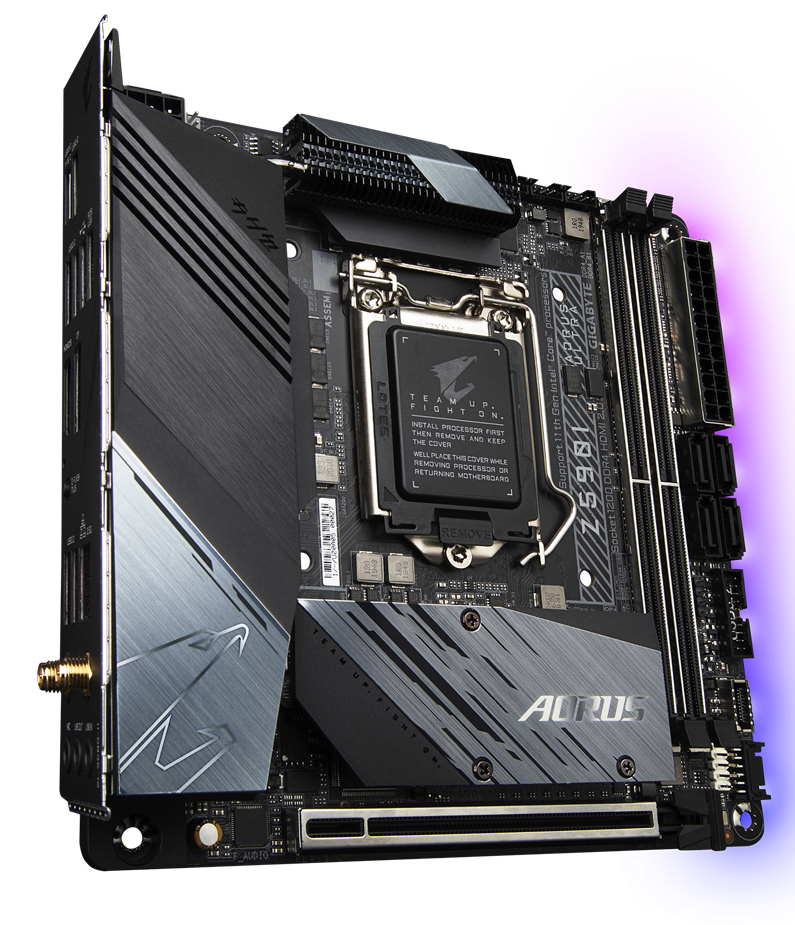
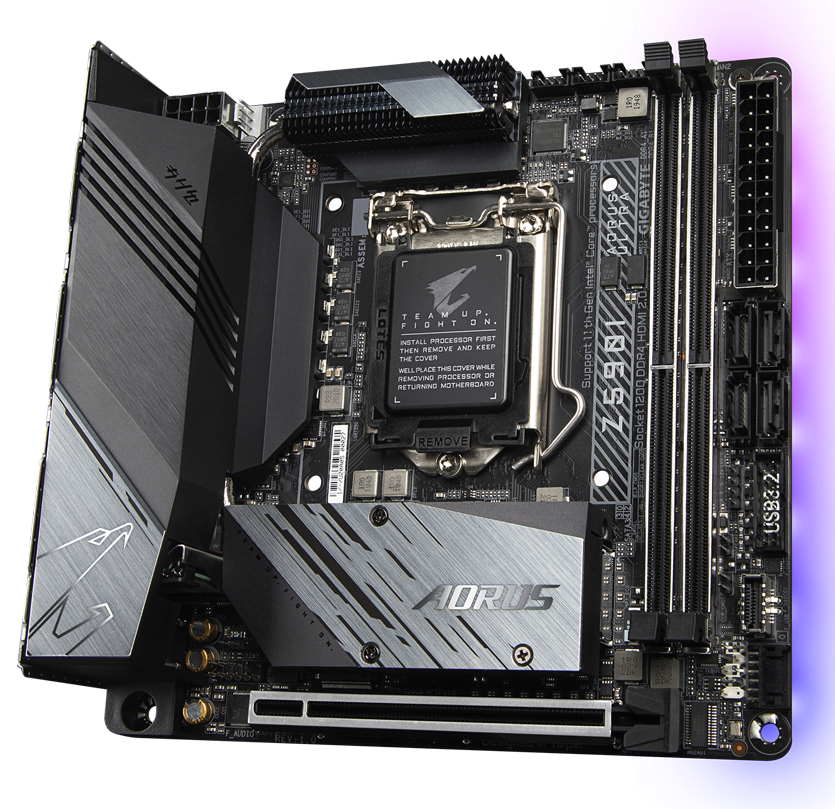
Taking a look at the Z590I Aorus Ultra, the small board sports a finned heatsink for the VRM, which is connected to a second VRM heatsink via heatpipe. The larger heatsink has a brushed aluminum finish with a couple of deep lines cut out, along with the Aorus falcon at the bottom. The chipset/M.2 heatsink has the Aorus name in chrome on top. All major slots (PCIe, EPS, DRAM, and ATX connectors) are reinforced (which Gigabyte’s Ultra Durable armor), making for a nice visual contrast against the black board. Stenciled in white to the right of the processor is the model name.
On the RGB front, the Aorus Ultra has the most lights of all the Mini-ITX boards, with a strip of eight RGB LEDs tucked in on the underside of the board. These are bright lights and do not use any diffusion techniques (like frosted plastic, for example) to soften the light. The RGB Fusion software handles lighting controls. Compared to the previous generation, this board doesn’t look drastically different, and still carries the premium look and feel we’re used to.
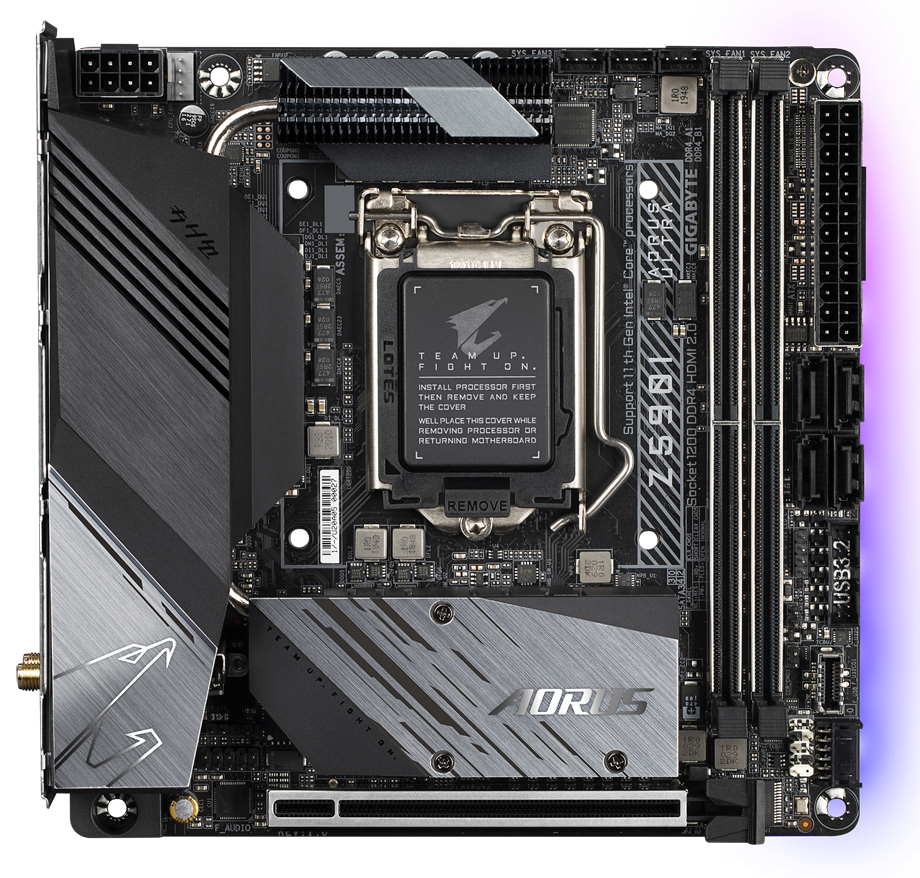
Looking more closely at the board, we’ll start on the left-hand side and move around clockwise. Up top is the required 8-pin EPS connector, along with the first (and only) full-size fan header. The VRM banks get cooled by a heatsink connected via a heat pipe to both the left VRM bank and the chipset/M.2 heatsink to share the load between them.
To the right of the top VRM heatsink are three small 4-pin headers designed for fans. Gigabyte includes three adapters for these proprietary fan headers. Each header supports up to 2A/24W, which is the most we’ve seen overall in our tested ITX boards. If you want to get a powerful pump and piggyback a couple of fans on one header, you can do so. But be sure to check the power draw on your devices before throwing them on (as you should with any motherboard).
Located off to the right of the socket are two reinforced DRAM slots. Like the others, the Gigabyte supports up to 64GB of unbuffered non ECC RAM with speeds listed up to DDR4 4600(OC) when using an 11th gen processor. As always, your mileage may vary as reaching those speeds is both CPU and memory kit-dependent.
Get Tom's Hardware's best news and in-depth reviews, straight to your inbox.
Along the right edge are a slew of connectors and headers. Up top is the 24-pin ATX for powering the board. Below are four SATA ports, a USB 3.1 Gen 1 and a USB 3.2 Gen 1 Type-C header. I would like to see faster USB speeds here, a bump to at least 3.2 Gen 2 on one of these headers. Next to the USB ports is a 4-pin RGB header, 2-pin speaker and clear CMOS jumpers, and the front panel header.
Along the bottom of the board is the full-length PCIe 4.0 x16 slot for your graphics card. Just above it in a stacked configuration (like all other boards here) is an M.2 socket with the chipset found underneath. The top socket is CPU connected, supporting up to PCIe 4.0 x4 (64 Gbps) modules, while the second M.2 socket (located on the back of the board) is connected to the chipset running PCIe 3.0 x4 and SATA based modules. Both sockets support up to 80mm devices. Between the SATA ports, M.2, and PCIe, there is no lane sharing. So what you see is what you get, even when fully populated.
Further to the left, next to the front panel audio and 3-pin ARGB header, is where you find the Realtek ALC1220-VB audio codec. This last-gen flagship hides under the IO cover/VRM heatsink with only a couple of small yellow Nichicon audio caps visible. Gigabyte doesn’t mention an integrated DAC/amplifier. That said, it will be challenging to hear a difference between the audio codecs on all of these boards. Unless you’re rocking high-end audio equipment, the onboard solution here should be satisfactory.
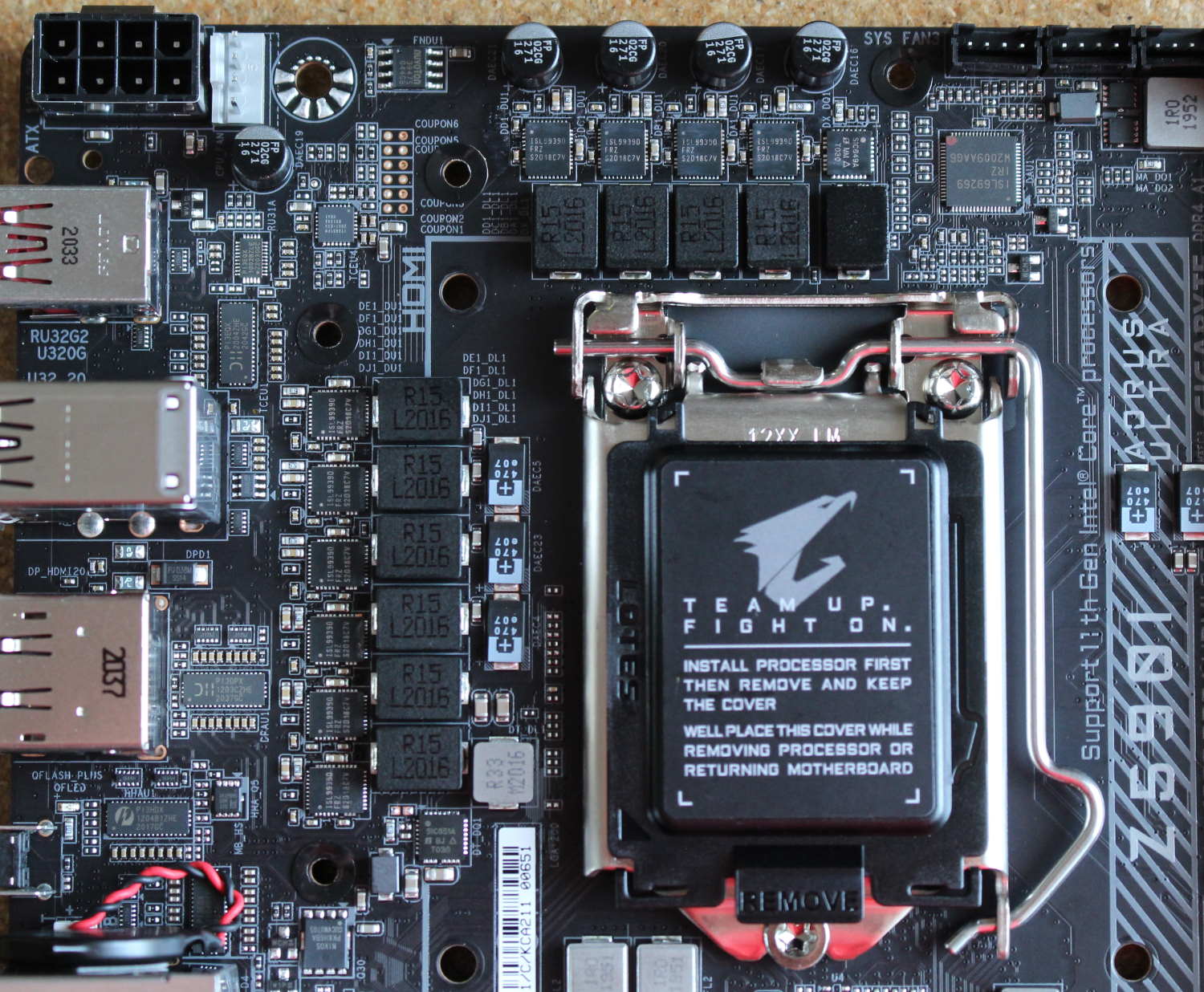
Gigabyte chose a 10-phase VRM setup for the CPU supported by beefy MOSFETs. Power goes through the 8-pin EPS connector to a Renesas ISL69269 12-channel (X+Y+Z=12) controller. It then moves on to the 10 ISL99390 90A Smart Power Stages, which gives the CPU a total of 900A power when needed. This is the most robust power delivery of all three (four including the MSI not covered here) Mini-ITX Z590 boards. The Aorus Ultra won’t have any problems running 10th or 11th gen CPUs at stock or with ambient overclocks.
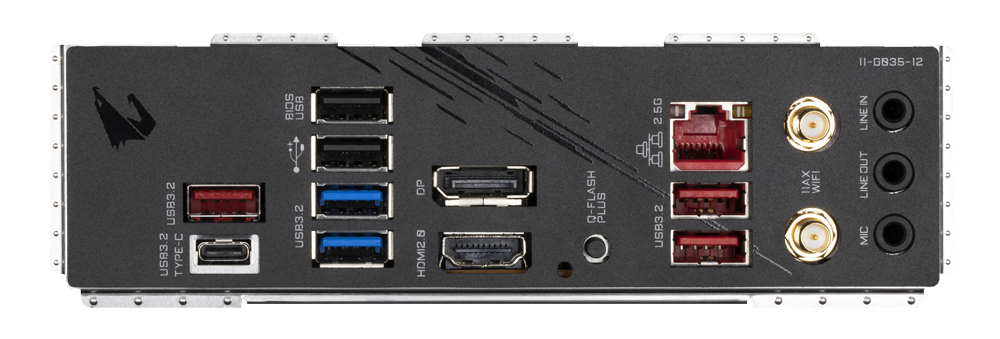
Looking at the rear IO, you’re greeted by a non-descript, integrated black IO plate. From left to right is a USB 3.2 Gen 1 Type-A port and USB 3.2 Gen 1 Type-C port. The next stack over contains two USB 2.0 ports and two more USB 3.2 Gen 1 ports. Next to that is the video stack with an HDMI (v2.0) and DisplayPort (1.4) ports. Continuing right, there’s a Q-Flash button, 2.5 GbE port, two more USB 3.2 Gen 2 ports, Wi-Fi antenna connections and the 3-plug audio stack.
Firmware
The Z590I Aorus Ultra BIOS theme doesn’t look different from the Z490 version. The Aorus board still uses the black and orange theme we’re familiar with. Like other board partners, Gigabyte includes an Easy Mode for high-level monitoring and adjustments, along with an Advanced section. The BIOS is well organized, with many of the more commonly used functions easily accessible without drilling down multiple levels to find them. In the end, the BIOS works well and is easy to navigate and read (although I wish Page Up/Down worked). We’ve captured a majority of the BIOS screens to share with you in the slideshow below.
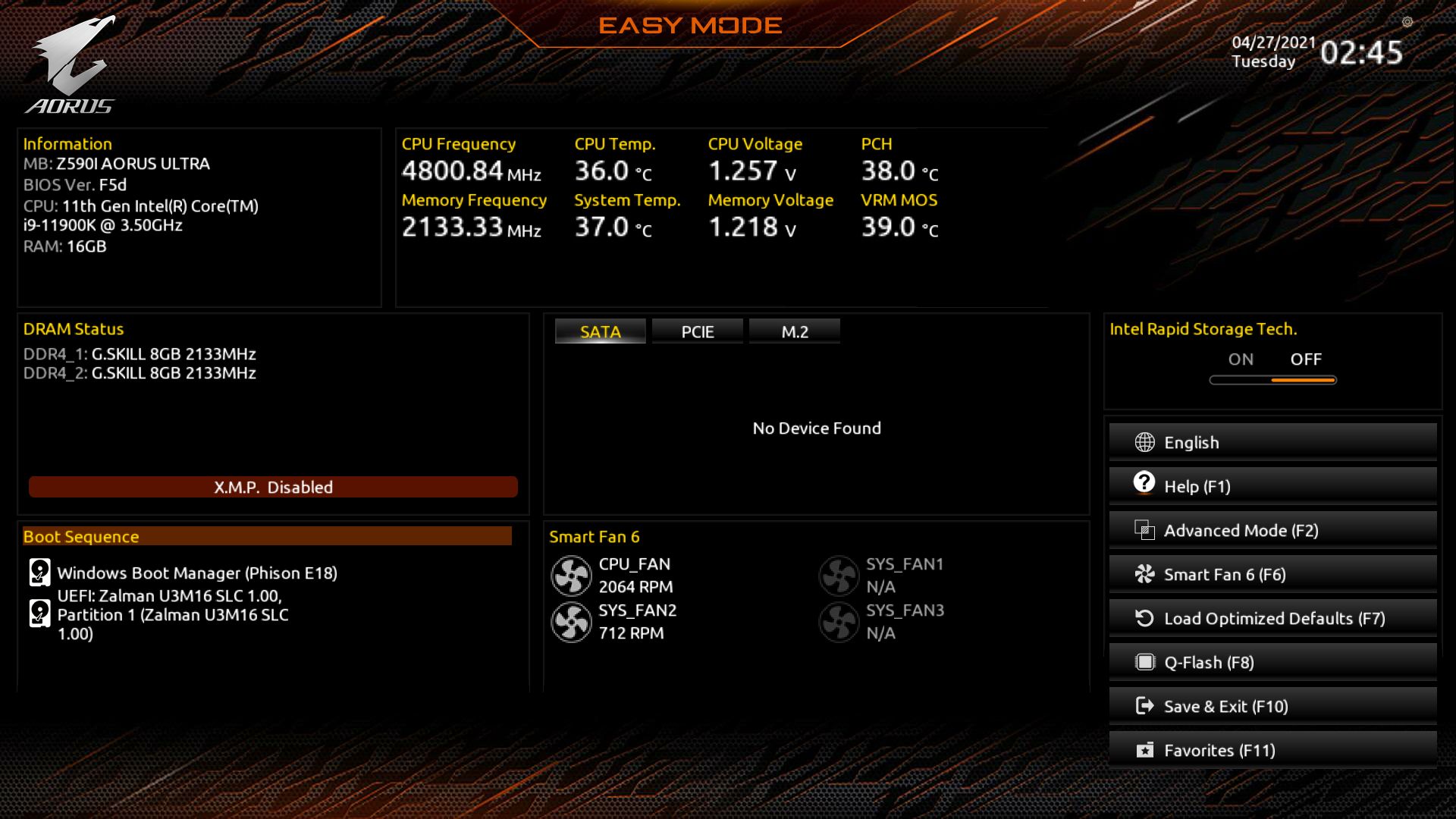
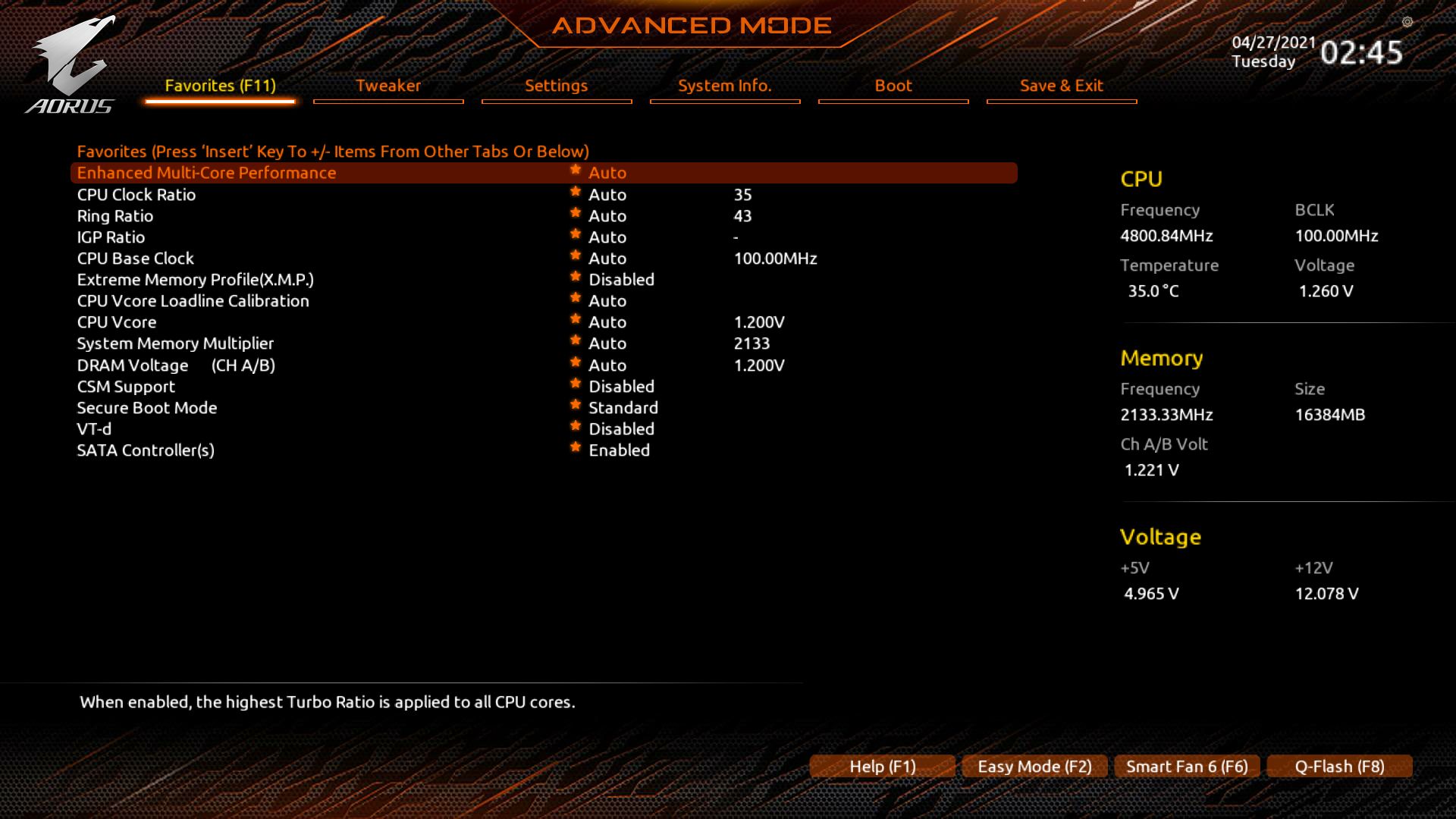
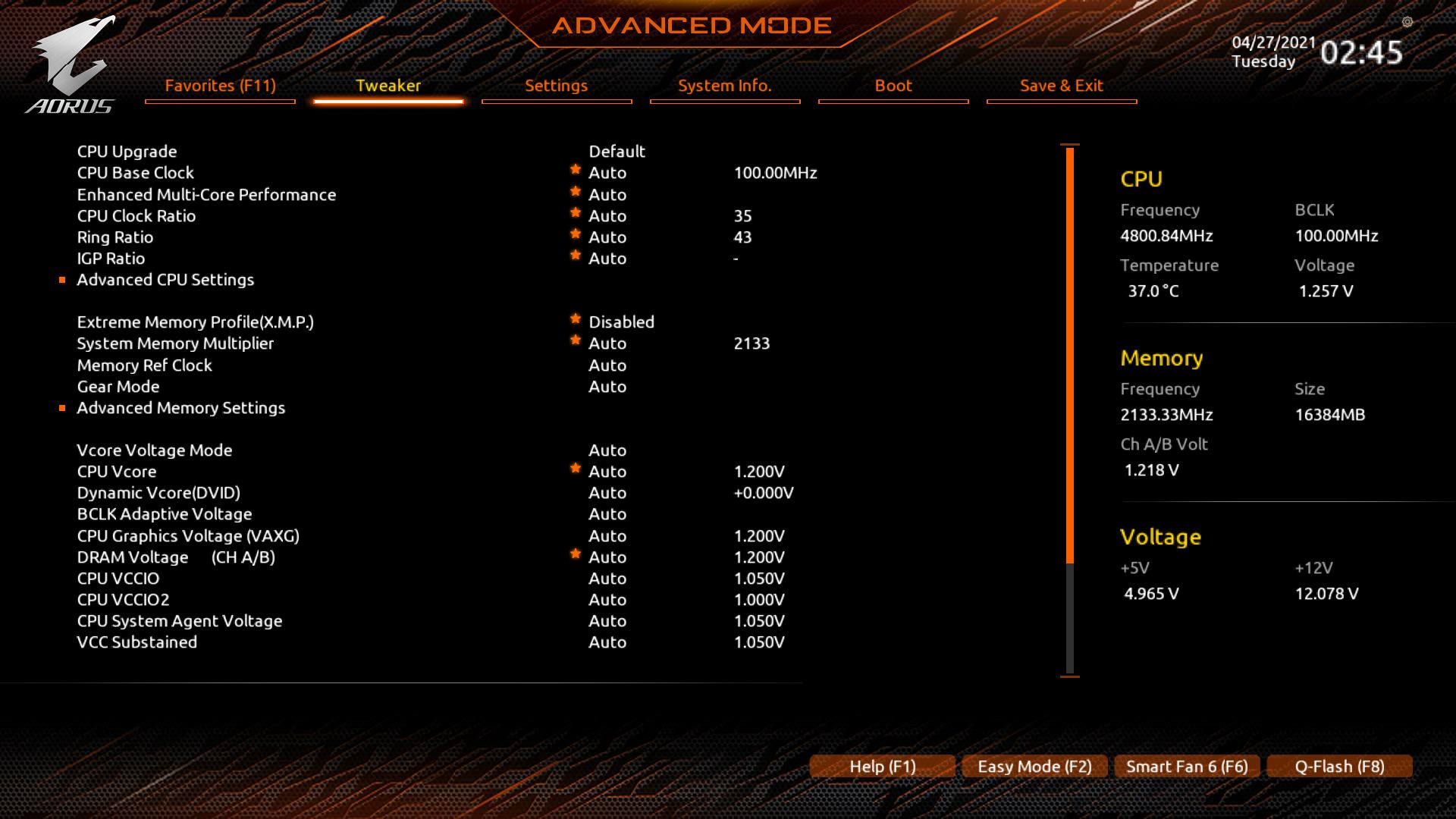
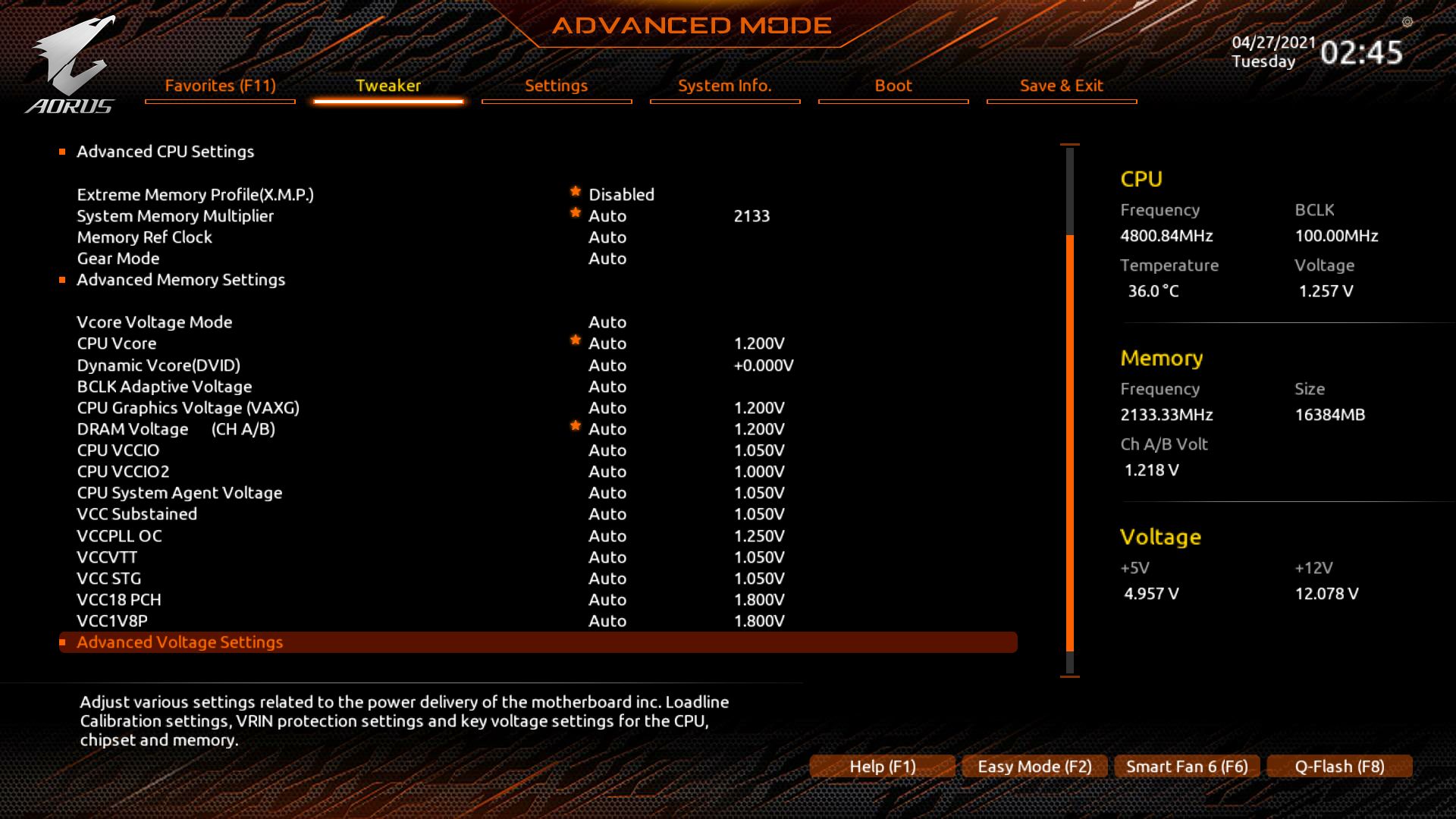
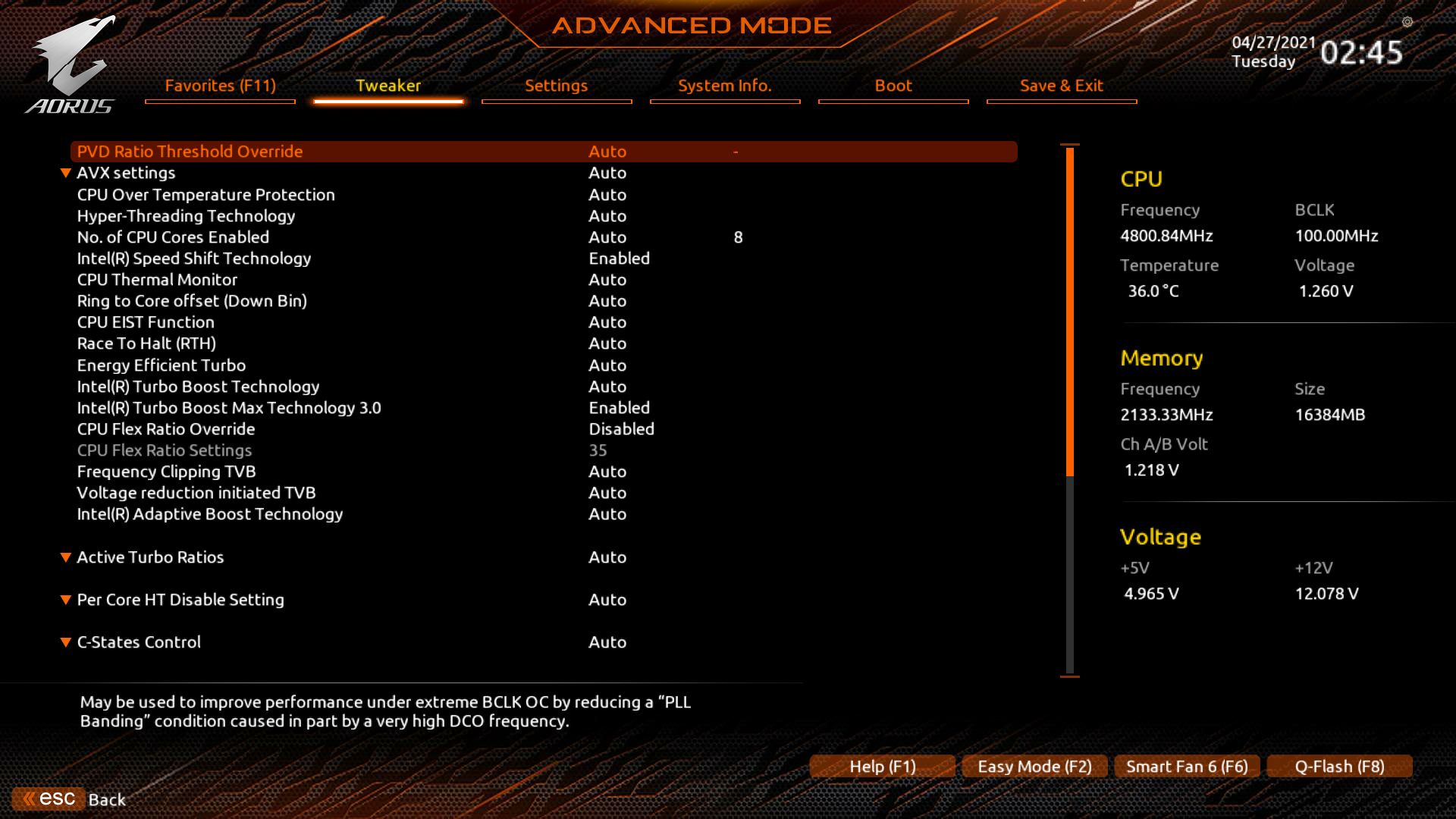
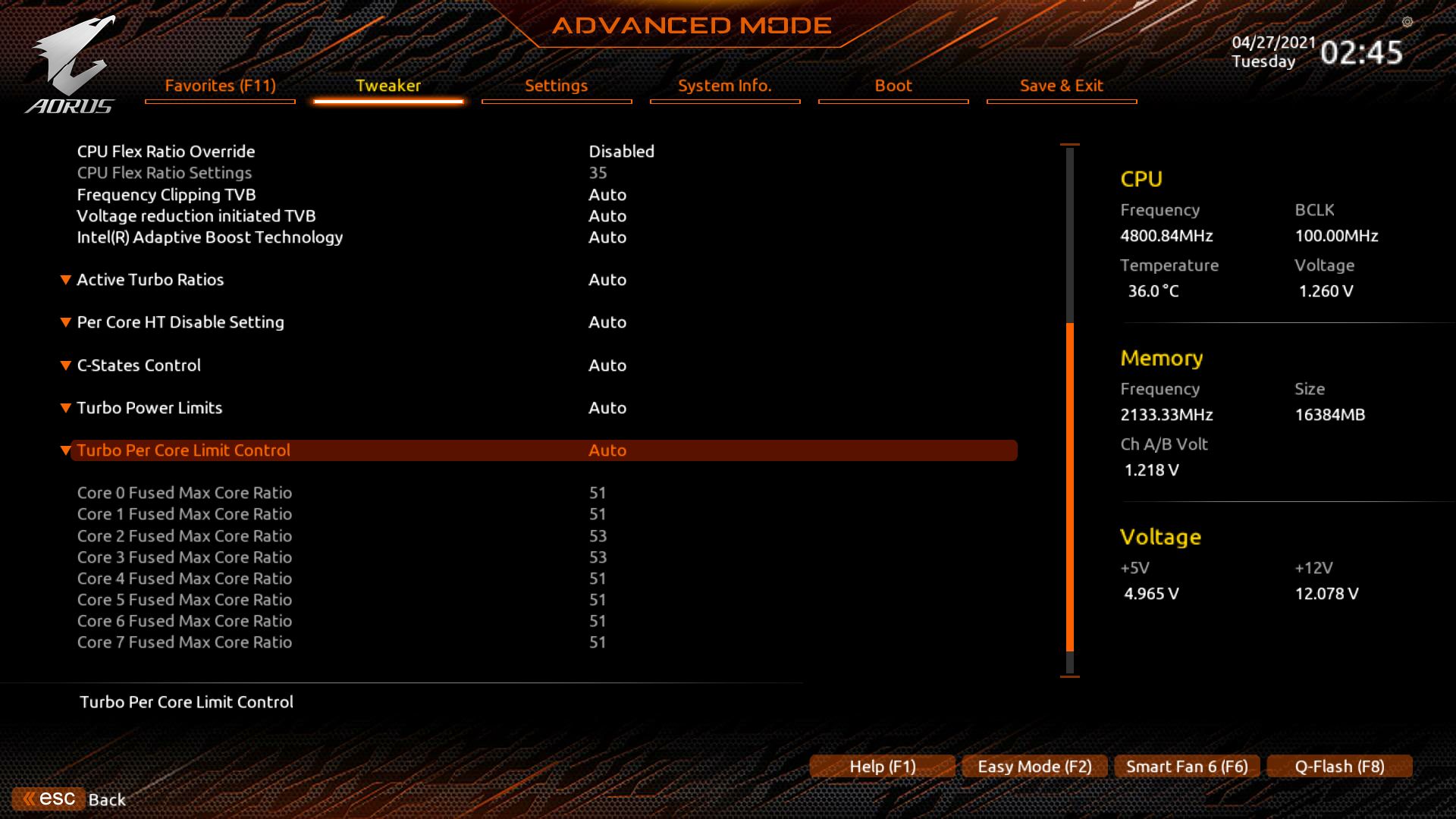
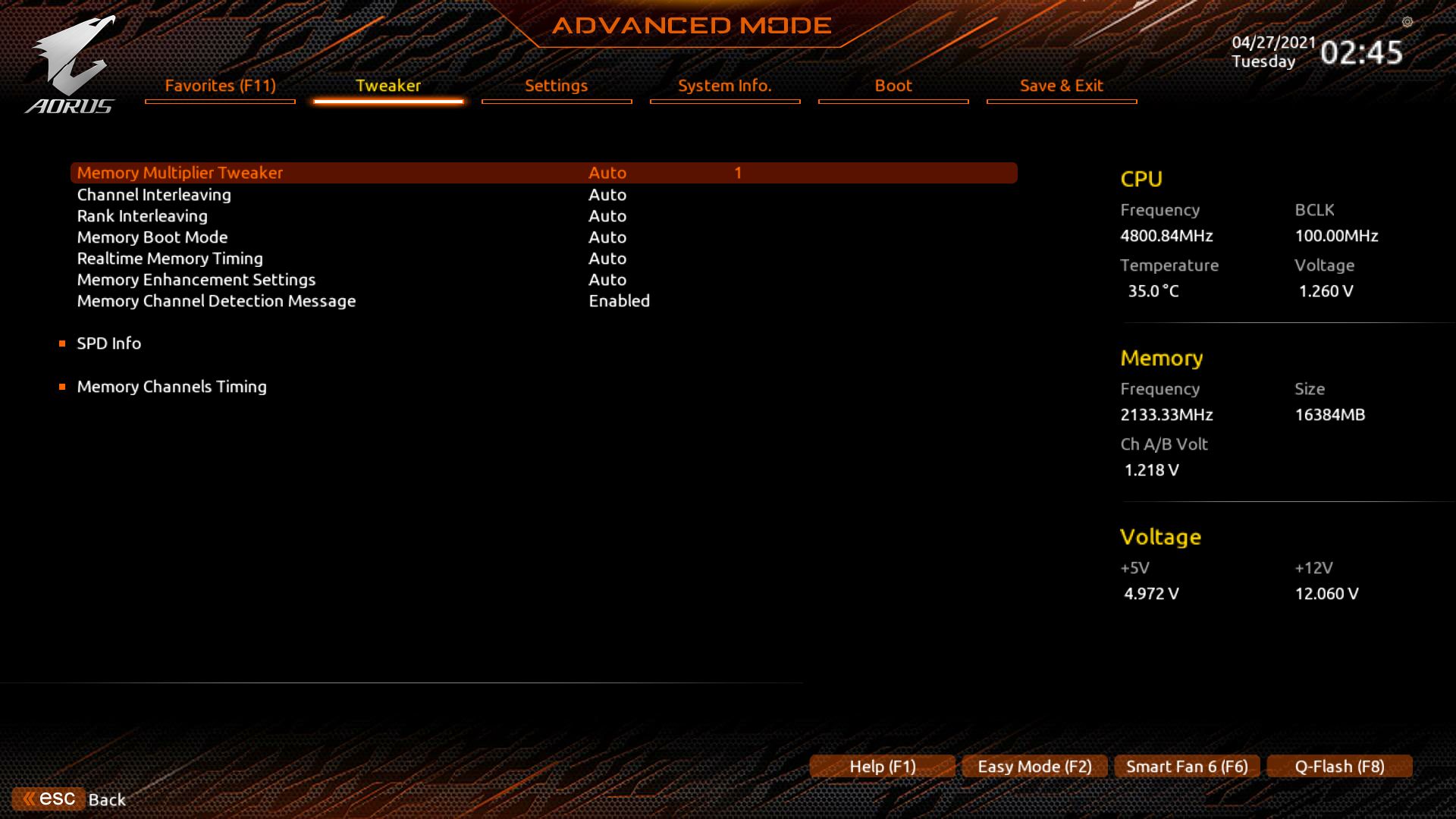
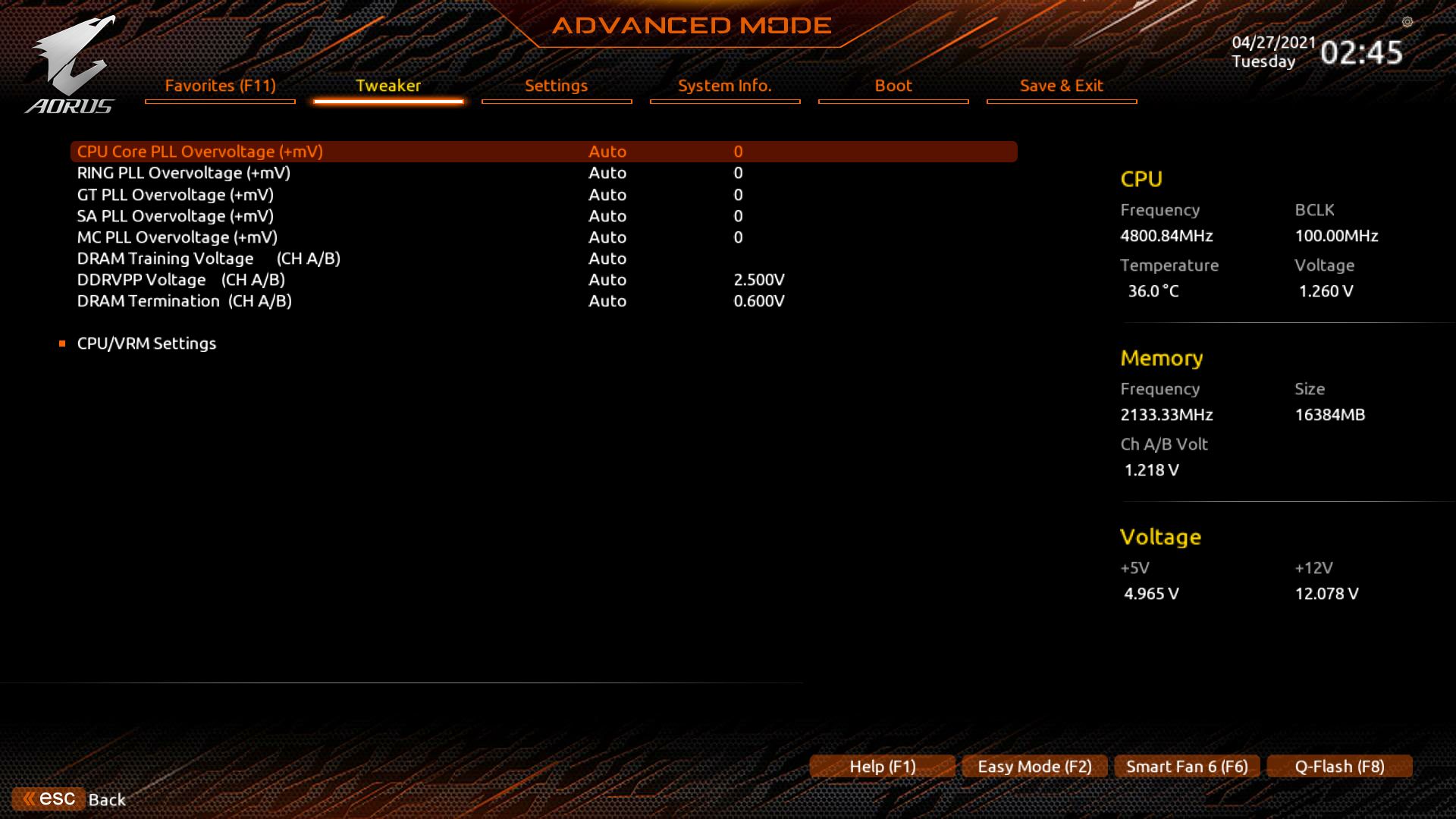

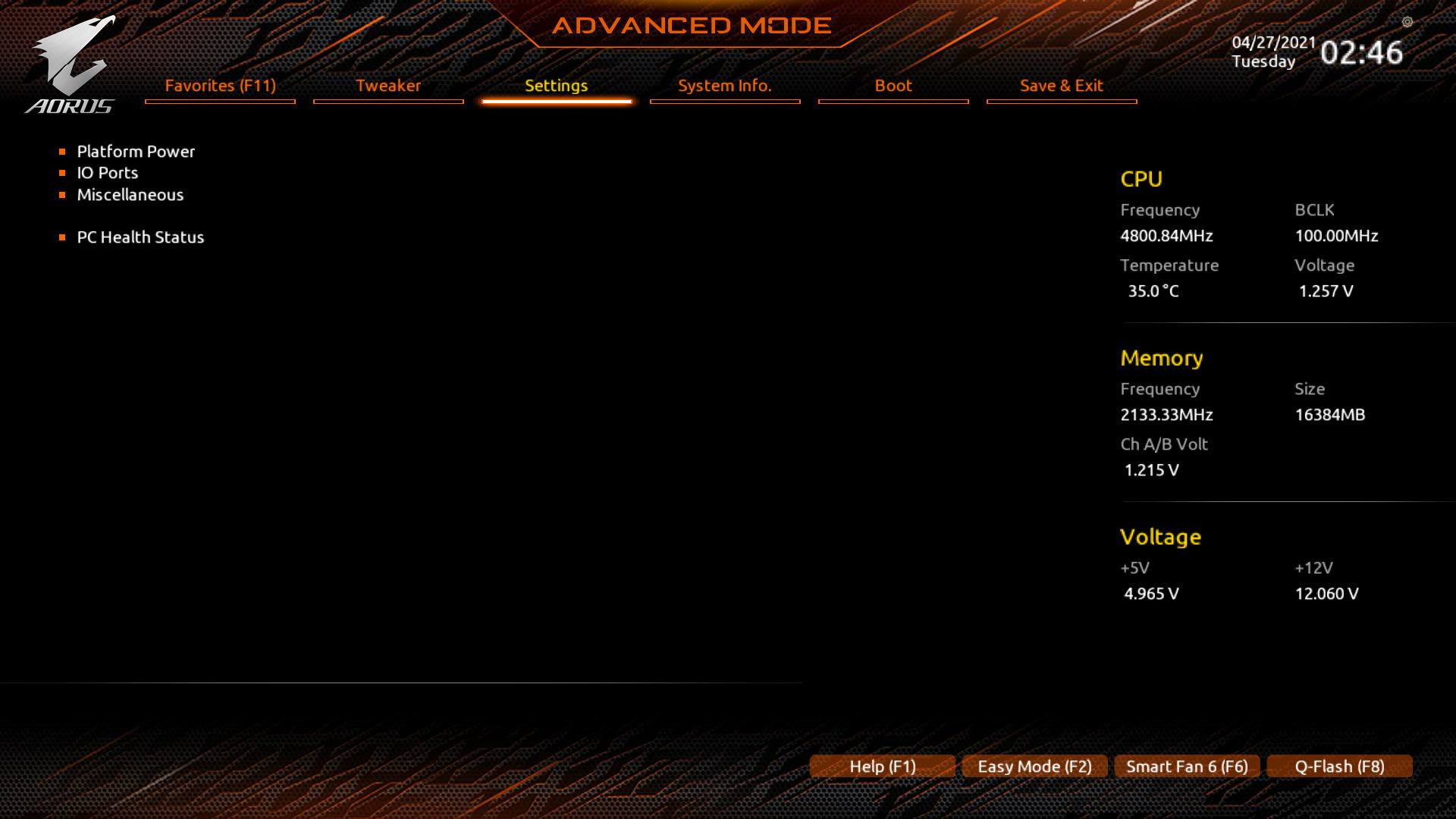


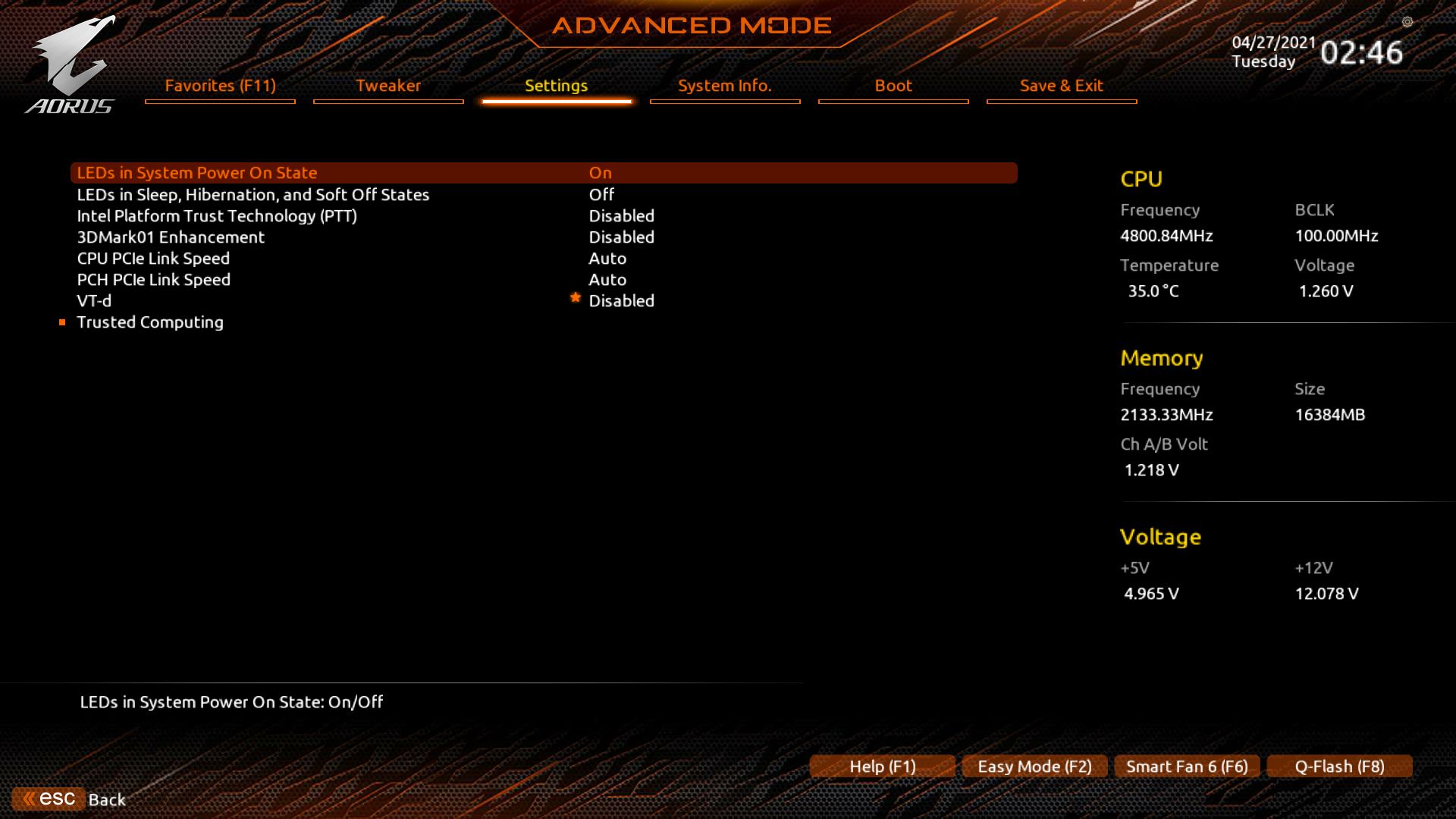

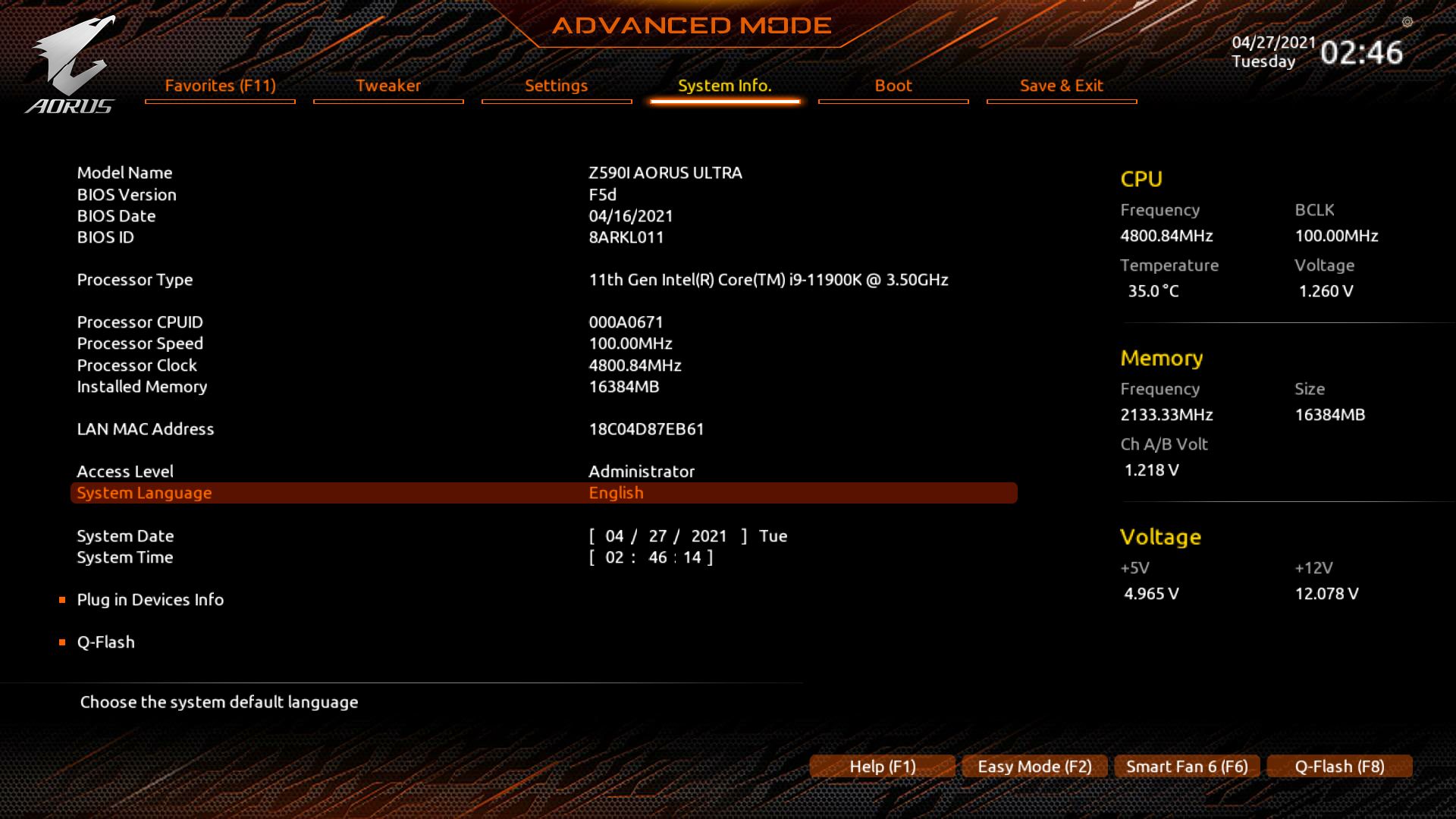

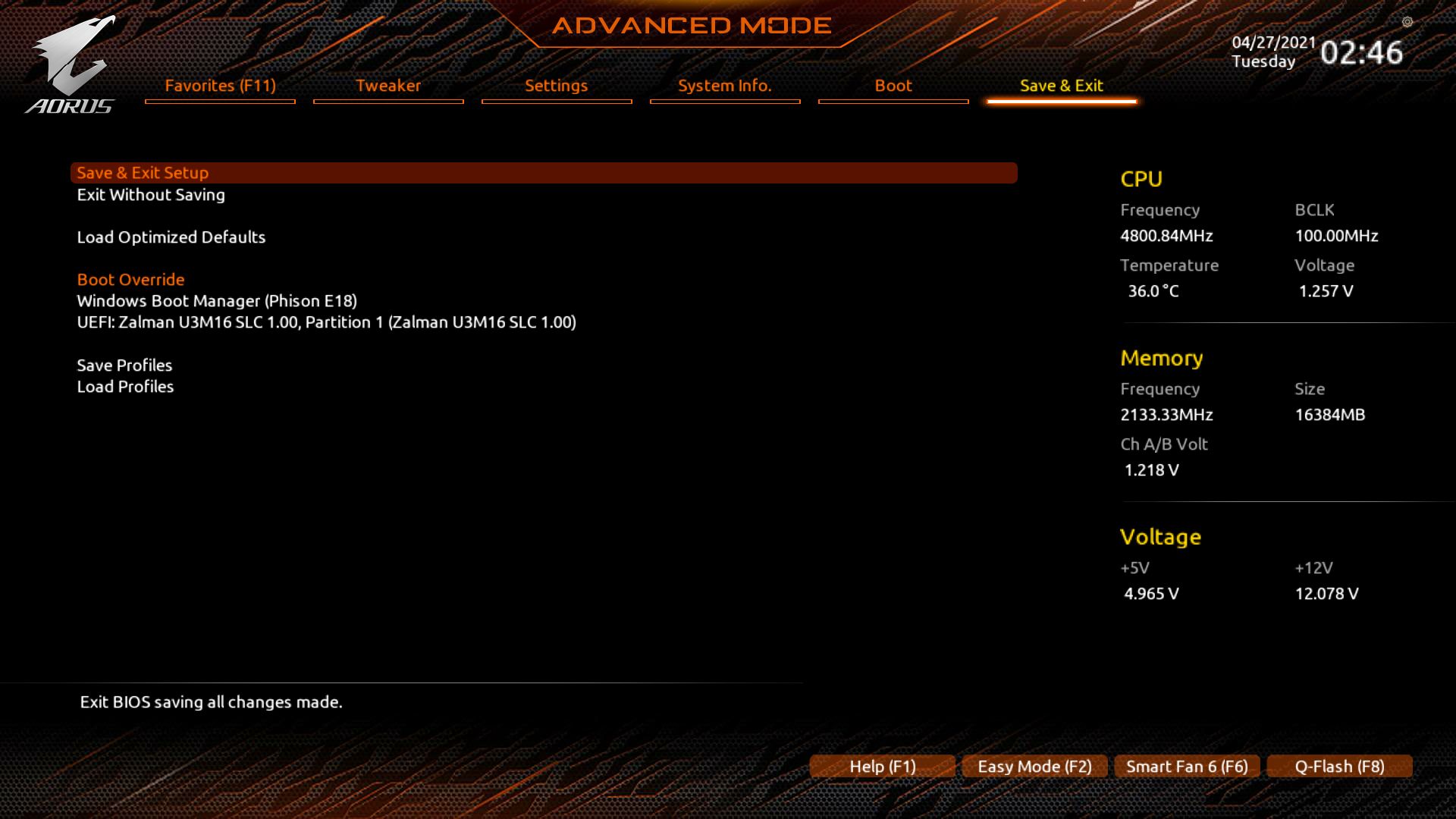

Software
Gigabyte includes a few applications designed for various functions, including RGB lighting control, audio, system monitoring, and overclocking. Below, we’ve captured several screenshots of the App Center, @BIOS, SIV, RGB Fusion and Easy Tune.


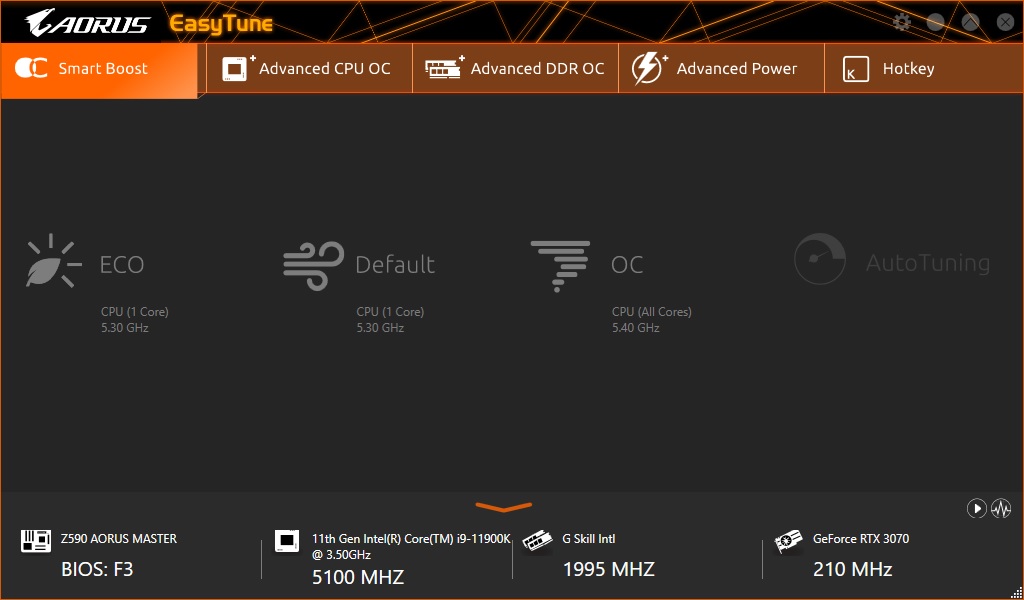



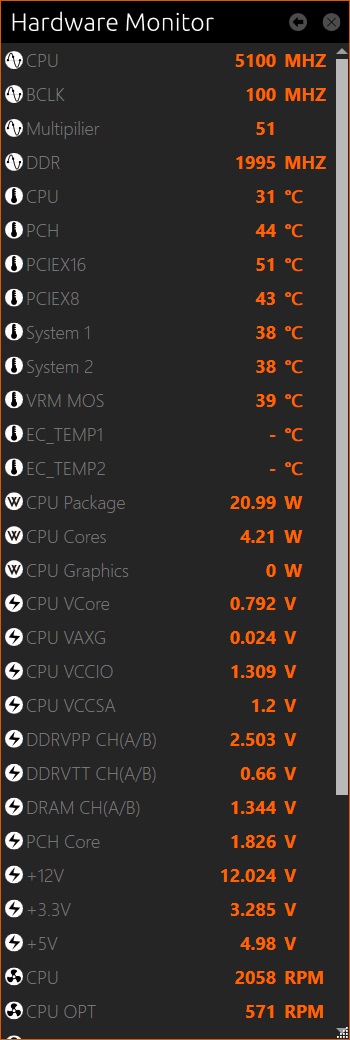
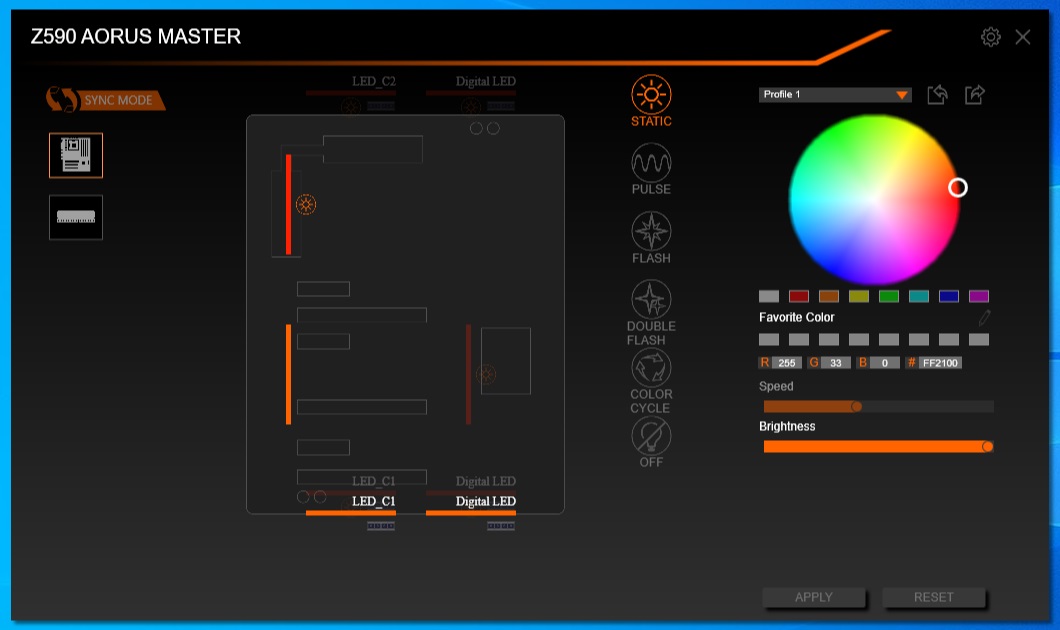
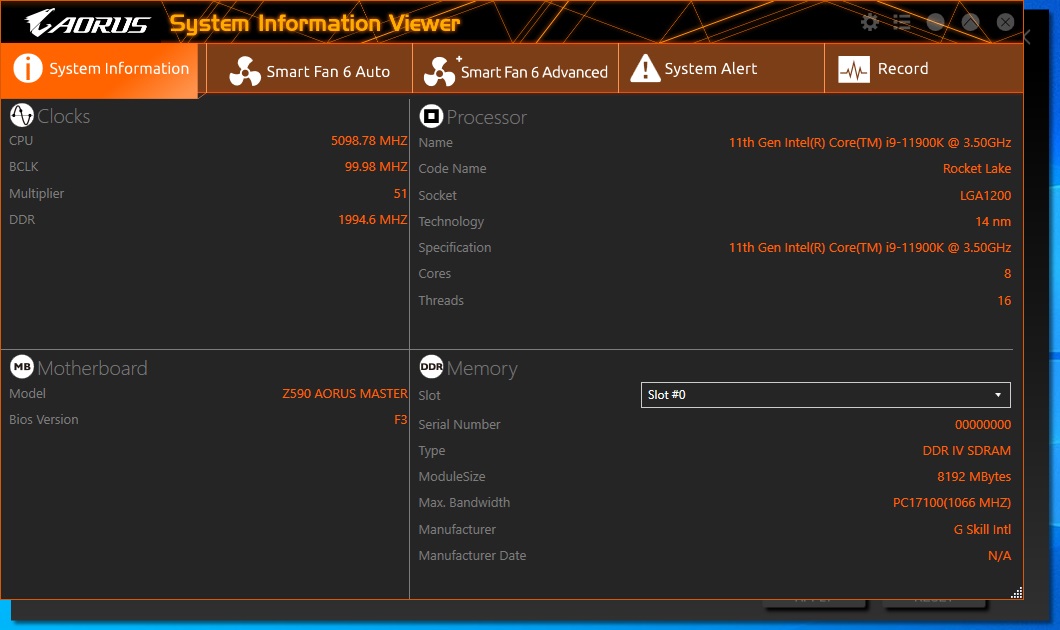

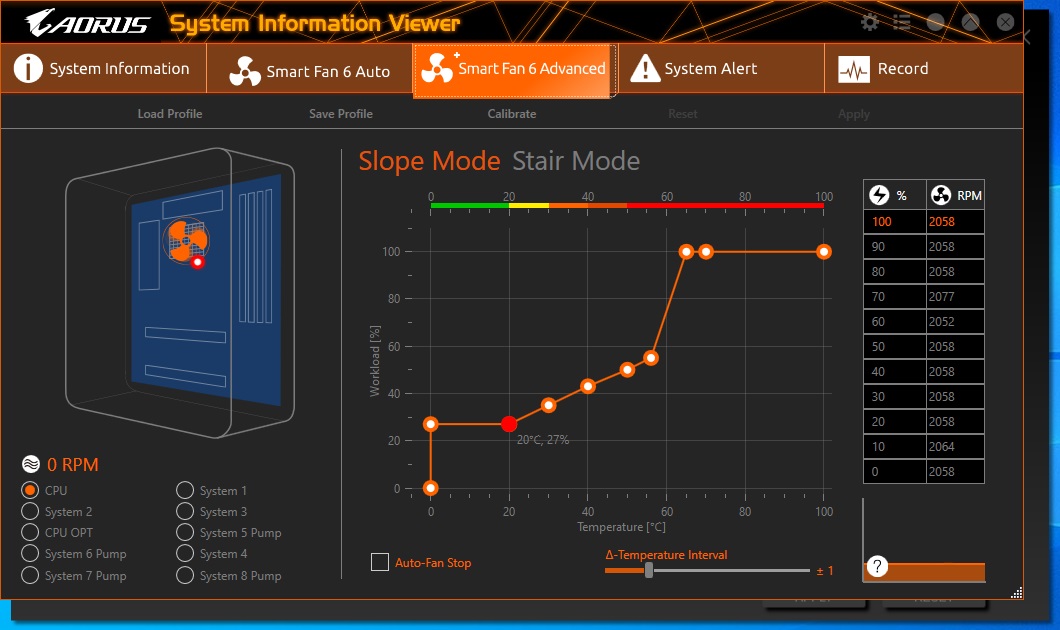

With the features of our three Min-ITX boards out of the way, let’s look at performance on the next page.
MORE: Best Motherboards
MORE: How To Choose A Motherboard
MORE: All Motherboard Content
Current page: Gigabyte Z590I Aorus Ultra
Prev Page Asus ROG Strix Z590-I Gaming WiFi Next Page Test System, Benchmarks and Final Words
Joe Shields is a staff writer at Tom’s Hardware. He reviews motherboards and PC components.
-
g-unit1111 Now this is what I am talking about!Reply
I am looking to build a mini ITX system and have been torn between the i5-11600K and a Ryzen 5 3600X. The only reason why I wouldn't use the Intel in this system is because of the high cost of the boards. I'm hoping this gets corrected soon.